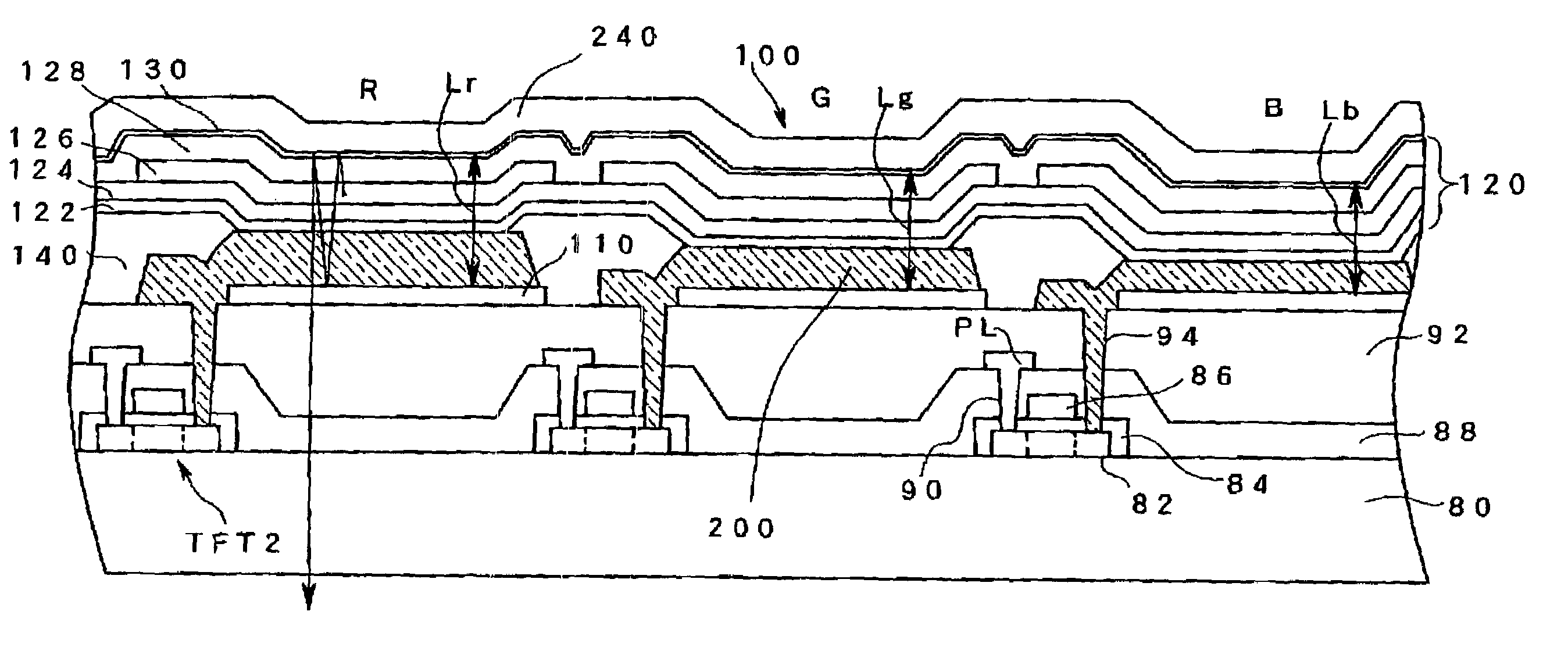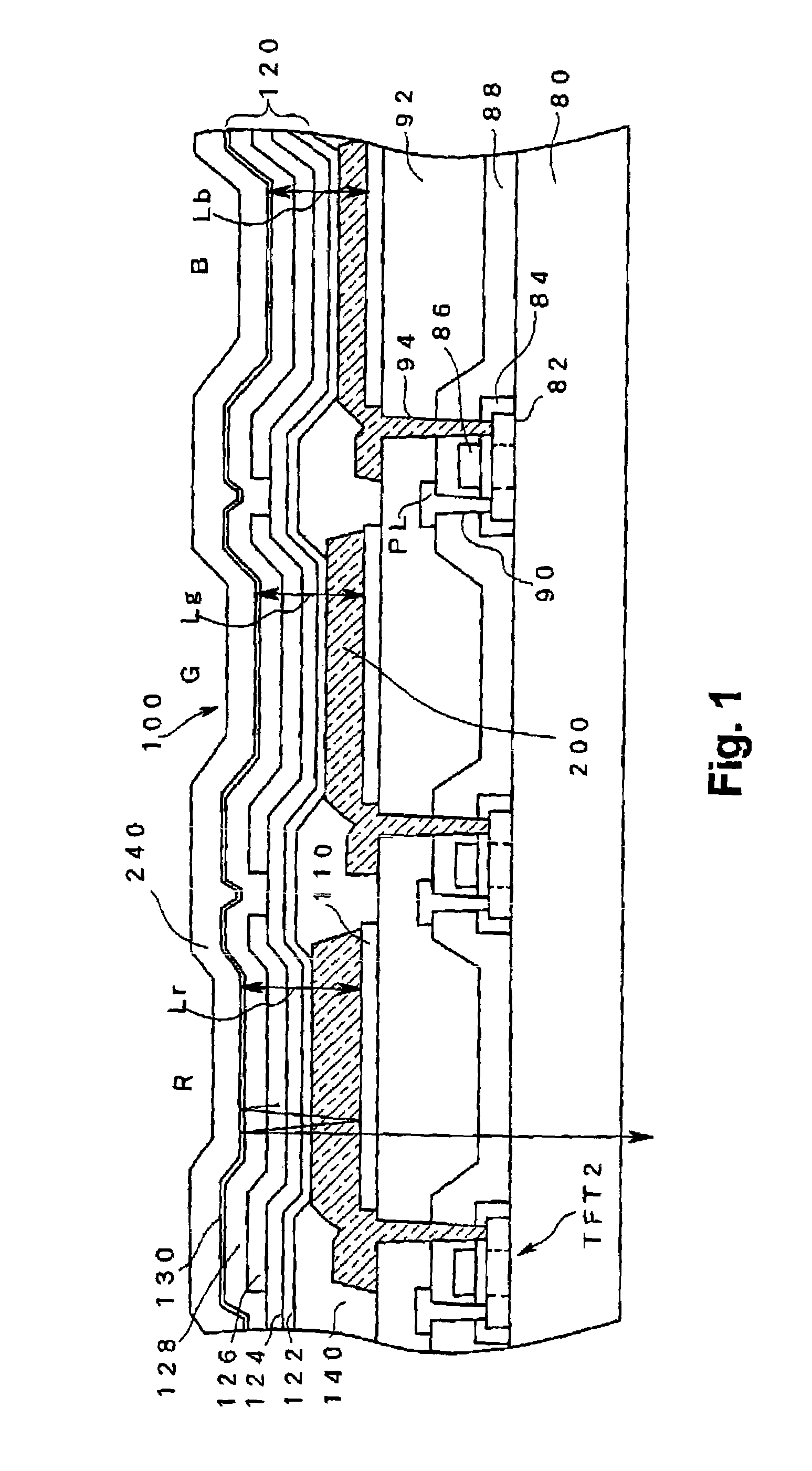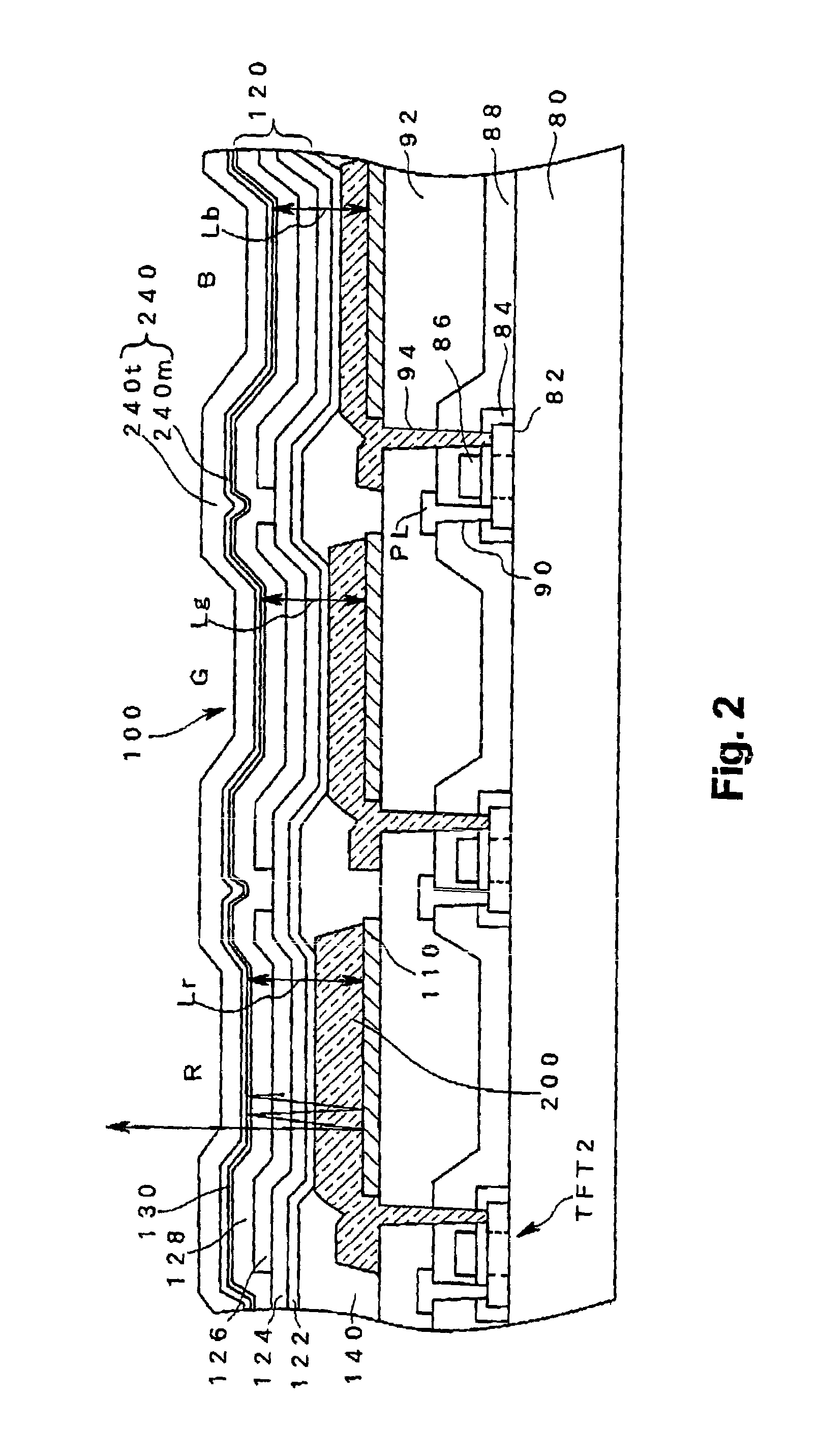Method for manufacturing display device with conductive resonator spacer layers having different total thicknesses
a technology of conductive resonator and spacer layer, which is applied in the manufacture of electric discharge tubes/lamps, cold cathode manufacturing, and electromechanical systems, etc. it can solve the problems of insufficient light emission brightness of currently proposed organic el elements, inability to actually employ a display device, and acceleration of deterioration of organic layers, so as to achieve easy and accurate formation of optical microresonators, easy to change, and high positional precision
- Summary
- Abstract
- Description
- Claims
- Application Information
AI Technical Summary
Benefits of technology
Problems solved by technology
Method used
Image
Examples
Embodiment Construction
[0037]A preferred embodiment (hereinafter, referred to simply as “embodiment”) of the present invention will now be described referring to the drawings.
[0038]FIG. 1 is a diagram schematically showing a cross sectional structure of a display device having a microresonator (microcavity) structure according to a preferred embodiment of the present invention. The display device is a light emitting display device having a self-emissive display element in each pixel. The present invention will be described exemplifying an organic EL display device in which an organic EL element is used as the display element.
[0039]An organic EL element 100 has a layered structure having an organic light emitting element layer 120 which at least includes an organic compound, in particular, an organic light emitting material, between a first electrode 200 and a second electrode 240. The organic EL element 100 takes advantage of a principle that electrons are injected from an anode to the organic layer and h...
PUM
 Login to View More
Login to View More Abstract
Description
Claims
Application Information
 Login to View More
Login to View More - R&D
- Intellectual Property
- Life Sciences
- Materials
- Tech Scout
- Unparalleled Data Quality
- Higher Quality Content
- 60% Fewer Hallucinations
Browse by: Latest US Patents, China's latest patents, Technical Efficacy Thesaurus, Application Domain, Technology Topic, Popular Technical Reports.
© 2025 PatSnap. All rights reserved.Legal|Privacy policy|Modern Slavery Act Transparency Statement|Sitemap|About US| Contact US: help@patsnap.com



